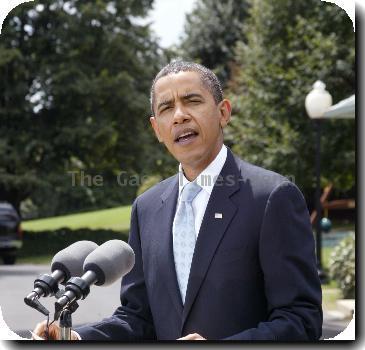Civilian deaths in Afghanistan spark protests, impatience with continued violence
By Deb Riechmann, APThursday, January 7, 2010
Civilian deaths unleash emotions in Afghanistan
KABUL — Thousands of Afghans shouting “Death to America!” protested the killings of children Thursday, the latest in a string of controversial cases in which international forces have been blamed for civilian deaths.
U.S. Gen. Stanley McChrystal has ordered troops to use airstrikes judiciously and fire cautiously to reduce civilian casualties. Still, each new report of civilians killed unleashes raw emotions that highlight a growing impatience with coalition forces’ inability to secure the nation.
There are fears the problem could get worse with 37,000 U.S. and NATO reinforcements already starting to stream into the country as part of a military buildup.
More civilians die at the hands of insurgents, yet any time innocent victims are killed, the Taliban wastes no time in blaming foreign troops.
“Every time the Taliban kills civilians, nothing happens. There is no protest. There is nothing,” said Hroon Mir, an independent political analyst in Kabul. “But whenever there are civilian casualties from NATO or Afghan forces, then there is a reaction.”
President Hamid Karzai has not been shy about denouncing the deaths — sometimes even before investigations can conclude whether civilians or militants were killed.
In a meeting this week with political analysts, Karzai said he would speak out boldly on the issue at a conference on Afghanistan Jan. 28 in London.
“If you don’t care about civilian casualties, you should not think about victory,” Karzai said he would tell the international community, according to Waheed Mozhdah, independent political analyst in Kabul who attended the meeting.
The U.N. reports that 2,021 civilians were killed in the first 10 months of last year, the latest figures available. Of the total, nearly 1,400 were blamed on insurgents and 465 on U.S. and other pro-government forces, the U.N. said.
NATO, which also tracks civilian deaths, said that international forces caused 190 civilian deaths last year and wounded 344 noncombatants. In contrast, NATO reported that insurgents were responsible for 1,011 civilian deaths and that militants wounded 2,407.
Last year, U.S. Gen. Stanley McChrystal, the commanding officer in Afghanistan, issued a new set of orders aimed at minimizing civilian casualties. He said that while it entailed risks to coalition forces, alienating the Afghan population was a far greater risk. Daily operational updates issued by the coalition often conclude with, “No Afghan civilians were harmed in any of these operations.”
But the precise death toll often matters less than the Afghan public’s perception.
In his final briefing to the U.N. Security Council as head of the U.N. mission in Afghanistan, Kai Eide said Wednesday that civilian casualties give the Taliban a recruitment tool.
“In the Afghan context, what affects one individual in a village affects all,” he said. “I am pleased to see the efforts of Gen. McChrystal to reduce such incidents and demonstrate greater respect for Afghan sensitivities. The military surge will make this challenge even more difficult.”
On Wednesday, an explosion tore through a group of children gathered around foreign soldiers visiting a U.S.-funded road project in Nangarhar province, east of the capital of Kabul. Afghan officials said four children were killed. NATO said two died.
Minutes after the blast, local residents were accusing American forces of throwing a grenade into the crowd — even though several international troops were among the wounded. The Afghan Interior Ministry later released a statement saying the explosion occurred when a passing police vehicle hit a mine.
Still, an estimated 5,000 protesters demonstrated the deaths Thursday along a road between Kabul and Jalalabad in Nangarhar. They waved a banner condemning the attack, set fire to an effigy of President Barack Obama and chanted “Long live Islam!” and “Death to Obama!”
“We are shouting ‘Death to America’ and ‘to the Afghan government,’” Sardar Wali, a university student at the demonstration. “It is the responsibility of the Afghan government to find and hand over the people who are responsible for this attack.”
The Afghan Taliban had a statement of its own Thursday that asked who killed “school students, the adolescents in Narang district of Kunar province, nearly one week ago?”
The insurgents were referring to an incident late last month when the Afghan government and foreign military officials sparred over reports that 10 civilians died during a military operation in a remote area of Kunar in eastern Afghanistan.
Karzai expressed anger over the deaths, saying the victims included eight young students. He appointed a team to visit the province to investigate the deaths, which prompted hundreds of Afghans to protest and chant “death” to America.
The investigative team reported that eight students between the ages of 12 and 14 were among the dead discovered in a village house. NATO said that while it had no direct evidence to substantiate claims that civilians were killed, the international force had requested and welcomed a joint investigation to reach an “impartial and accurate determination” of what happened in the attack.
The incident in Kunar was the most serious allegation of accidental killings of civilians by Western forces since early December, when Afghan officials said 12 civilians were killed in an airstrike in neighboring Laghman province. NATO initially said no civilians were killed or injured, but days later, Lt. Gen. David Rodriguez, second-in-command to McChrystal, acknowledged that an alliance-led attack might have resulted in civilian deaths. An investigation continues into the incident, which prompted about 400 people to march in Mehtar Lam to protest the raid.
In other incidents last month, Afghan officials reported that an airstrike in late December by international forces in the southern Afghan province of Helmand killed seven civilians, two Taliban and wounded another civilian. NATO has said it is aware of the report and is investigating.
Also last month, Karzai met at the presidential palace with representatives from Paktia province who denounced the alleged killing of three civilians in the eastern province in December.
Associated Press Writer Amir Shah contributed to this report from Kabul.
Tags: Afghanistan, Asia, Barack Obama, Central Asia, Collateral Damage, Kabul, North America, Protests And Demonstrations, United States, War Casualties

